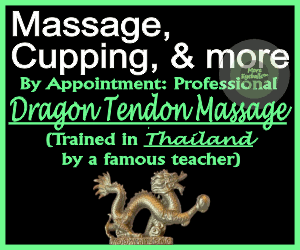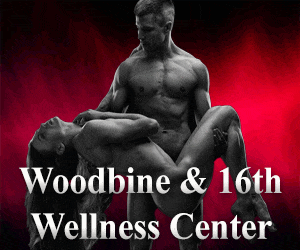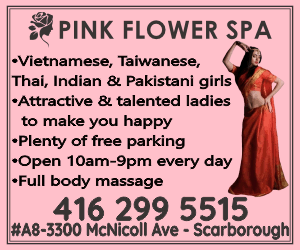A massage therapist explains how to do more by doing less

Photo: yacobchuk/Getty Images
 I’a massage therapist, which means that I spend my days literally feeling the frustrations and confusions people hold in their bodies. If you are like most of my clients, you work hard and you often feel tense. You may feel burdened by the aches and pains of your body, and powerless in the face of all your commitments.
I’a massage therapist, which means that I spend my days literally feeling the frustrations and confusions people hold in their bodies. If you are like most of my clients, you work hard and you often feel tense. You may feel burdened by the aches and pains of your body, and powerless in the face of all your commitments.
I’m not going to tell you to work less. Sure, fewer hours at the office and more hours on the meditation cushion would be nice… and probably impossible. But there is something you can do to ease the stress you carry around—a fundamental change you can make regardless of your job or the length of your to-do list. You can literally work less hard.
I teach other massage therapists how to prolong their careers by using their bodies more effectively. The longer I teach, the more I realize that we therapists and our clients are all suffering from a similar — and usually invisible — problem. As we do our most basic tasks, day after day, we use more muscular effort than is necessary.
For my fellow massage therapists, this over-efforting is obvious. We burn out at alarming rates; according to recent studies, 90 % of massage therapists are working “in some level of pain,” and the average career for a massage therapist only lasts three to five years. As we try to make everyone else feel better, we overwork and injure our own bodies. I teach massage therapists to create new habits — to use their breath and body weight more and their muscles less. But the essential principle of my teaching is applicable to all: use the minimum effort necessary.
You are probably already aware of your own excess effort, even if you don’t think about it in those terms. That viselike tension that descends over your shoulders as your next deadline looms? That stiffness in your hips when you get out of bed? That dull ache that spreads across your lower back by the end of the day? Many of the aches and pains and tensions that bedevil us — especially the ones that are hard to describe, and hard to treat, and hard to understand — emerge not because there is anything wrong with our bodies, but simply because our bodies are working harder than they need to.
There are exceptions, of course. Some of my clients have aches and pains that can be traced to a particular origin. But most of the people who I work with — clients and therapists alike — come to see me because there is not an obvious explanation for the tension that they can’t seem to get rid of, the ones that seem to sneak in and grab ahold of their bodies. Science has a term for this category of problems, the ones whose origins can’t be explained: they are of an “unknown etiology.”
But if we look at our tensions differently, we can see that the origins are everywhere around us. Unknown etiology is an unintentionally accurate term in that the tensions we feel every day are not caused by any one thing in particular. They are caused by every thing — by the overwhelming and seemingly endless list of pressures that make up our daily lives.
Belinda Mello, a senior teacher of the Alexander Technique, explains that “anticipatory tension” is largely to blame. When we wake up thinking ahead to the next task, spend our days preparing for the next problem, and go to bed pushing for the next goal, that anticipation manifests physically. And of course, this intensity is fueled by our always-on, always-striving, always-doing culture.
But you don’t have to be held hostage by your habits. You can teach your muscles to do less. There are three steps I practice every day that can help you notice your excess effort and then choose a position of greater ease: First, think about a part of your body that often aches or feels tight or stuck. Then, over the course of your day, notice all the different things you do that require you to use that part of the body. Finally, each time you make those movements, see if you can do the same thing, but with slightly less effort.
“One of the primary ways that we can improve the efficiency of our movement is to inhibit unnecessary muscular contractions,” the movement therapist Todd Hargrove writes on his website, Better Movement. “In this sense, learning better movement is more like sculpture than painting. You improve your art by taking things away, not adding them.” It’s not always so easy to be aware of this in our own bodies. I often have to nudge my clients to pinpoint and name their most common areas of excess.
Now it’s your turn. What parts of your musculature frustrate you?
Among the most common complaints I hear is tension, or tightness, or pain that spreads down the forearms and into the hands. Sound familiar? Chances are, it’s not actually carpal tunnel syndrome. But it’s very likely that you are using your hands more than you need to. The next time you type an email or complete a spreadsheet, notice your fingers—they are likely hovering above the keyboard as you figure out what to type next. Holding your fingers in midair isn’t accomplishing anything, but does require the contraction of muscles from the fingertips all the way up to the elbows. Instead, let your fingertips rest on the keyboard in between keystrokes. Learning how to allow your fingers to drape over the keys will also enable you to soften all the way up to your elbows, and eventually, even up to your shoulder blades.
The same is true with your phone. The next time you’re texting or scrolling, check in with your body. Probably, just out of habit, you’ve got a death grip on your phone, and your thumb is clenched just above the screen, anticipating that next ping. Try softening your grip.
Another common trouble spot: hips that feel achy, stuck, or rigid. Here’s a trick for you: The next time you’re walking, notice what happens when you pause at the vending machine, or wait for the stoplight to change. Even though you’re no longer moving, the muscles wrapping around the back and sides of your pelvis are probably still partially contracted. We are so often thinking about getting on to the next thing that even when we come to a stop, our muscles are still working. We don’t let ourselves just stand still.
To understand how much your muscles are overworking, the next time you are standing and waiting for something, clench your gluteal (butt) muscles as high and tight as you can. Feel that extreme version of excess effort. And then, on your next exhalation, slowly release — imagine your glutes melting, like they are an elevator sinking all the way down to the basement. You are still standing — your body, after all, is not going to just let you fall over — but you are standing with far less effort.
And what about your shoulders, a common place for pain? Notice how the tension in your shoulders tends to build the longer you wear your purse or lug your groceries. As you carry, see if you can let your shoulders droop just a little. If you can’t locate that ability to drop the shoulders, then start by doing the opposite: hike your shoulders all the way up towards your ears, and then with your next exhalation, think of your shoulders sliding down as your lungs deflate. The only requirement is to prevent the thing you’re carrying from falling off your body. Anything that your shoulders are doing beyond that is a waste.
Becoming aware of your excess effort is not easy. It requires practice. But it is something you can do yourself, right now, to feel better in your body. When we carve away the unnecessary muscle contraction, all the things we want and need our muscles for — from making a living to picking up our kids to climbing mountains — happen more efficiently, more effectively, and more happily.
As Mello notes, “There is a lot more pleasure when we do something with the amount of effort it requires.” The more you have to get done today, the more important it is that you do so with less.
Photo: yacobchuk/Getty Images

I’m not going to tell you to work less. Sure, fewer hours at the office and more hours on the meditation cushion would be nice… and probably impossible. But there is something you can do to ease the stress you carry around—a fundamental change you can make regardless of your job or the length of your to-do list. You can literally work less hard.
I teach other massage therapists how to prolong their careers by using their bodies more effectively. The longer I teach, the more I realize that we therapists and our clients are all suffering from a similar — and usually invisible — problem. As we do our most basic tasks, day after day, we use more muscular effort than is necessary.
For my fellow massage therapists, this over-efforting is obvious. We burn out at alarming rates; according to recent studies, 90 % of massage therapists are working “in some level of pain,” and the average career for a massage therapist only lasts three to five years. As we try to make everyone else feel better, we overwork and injure our own bodies. I teach massage therapists to create new habits — to use their breath and body weight more and their muscles less. But the essential principle of my teaching is applicable to all: use the minimum effort necessary.
You are probably already aware of your own excess effort, even if you don’t think about it in those terms. That viselike tension that descends over your shoulders as your next deadline looms? That stiffness in your hips when you get out of bed? That dull ache that spreads across your lower back by the end of the day? Many of the aches and pains and tensions that bedevil us — especially the ones that are hard to describe, and hard to treat, and hard to understand — emerge not because there is anything wrong with our bodies, but simply because our bodies are working harder than they need to.
There are exceptions, of course. Some of my clients have aches and pains that can be traced to a particular origin. But most of the people who I work with — clients and therapists alike — come to see me because there is not an obvious explanation for the tension that they can’t seem to get rid of, the ones that seem to sneak in and grab ahold of their bodies. Science has a term for this category of problems, the ones whose origins can’t be explained: they are of an “unknown etiology.”
But if we look at our tensions differently, we can see that the origins are everywhere around us. Unknown etiology is an unintentionally accurate term in that the tensions we feel every day are not caused by any one thing in particular. They are caused by every thing — by the overwhelming and seemingly endless list of pressures that make up our daily lives.
Belinda Mello, a senior teacher of the Alexander Technique, explains that “anticipatory tension” is largely to blame. When we wake up thinking ahead to the next task, spend our days preparing for the next problem, and go to bed pushing for the next goal, that anticipation manifests physically. And of course, this intensity is fueled by our always-on, always-striving, always-doing culture.
But you don’t have to be held hostage by your habits. You can teach your muscles to do less. There are three steps I practice every day that can help you notice your excess effort and then choose a position of greater ease: First, think about a part of your body that often aches or feels tight or stuck. Then, over the course of your day, notice all the different things you do that require you to use that part of the body. Finally, each time you make those movements, see if you can do the same thing, but with slightly less effort.
“One of the primary ways that we can improve the efficiency of our movement is to inhibit unnecessary muscular contractions,” the movement therapist Todd Hargrove writes on his website, Better Movement. “In this sense, learning better movement is more like sculpture than painting. You improve your art by taking things away, not adding them.” It’s not always so easy to be aware of this in our own bodies. I often have to nudge my clients to pinpoint and name their most common areas of excess.
Now it’s your turn. What parts of your musculature frustrate you?
Among the most common complaints I hear is tension, or tightness, or pain that spreads down the forearms and into the hands. Sound familiar? Chances are, it’s not actually carpal tunnel syndrome. But it’s very likely that you are using your hands more than you need to. The next time you type an email or complete a spreadsheet, notice your fingers—they are likely hovering above the keyboard as you figure out what to type next. Holding your fingers in midair isn’t accomplishing anything, but does require the contraction of muscles from the fingertips all the way up to the elbows. Instead, let your fingertips rest on the keyboard in between keystrokes. Learning how to allow your fingers to drape over the keys will also enable you to soften all the way up to your elbows, and eventually, even up to your shoulder blades.
The same is true with your phone. The next time you’re texting or scrolling, check in with your body. Probably, just out of habit, you’ve got a death grip on your phone, and your thumb is clenched just above the screen, anticipating that next ping. Try softening your grip.
Another common trouble spot: hips that feel achy, stuck, or rigid. Here’s a trick for you: The next time you’re walking, notice what happens when you pause at the vending machine, or wait for the stoplight to change. Even though you’re no longer moving, the muscles wrapping around the back and sides of your pelvis are probably still partially contracted. We are so often thinking about getting on to the next thing that even when we come to a stop, our muscles are still working. We don’t let ourselves just stand still.
To understand how much your muscles are overworking, the next time you are standing and waiting for something, clench your gluteal (butt) muscles as high and tight as you can. Feel that extreme version of excess effort. And then, on your next exhalation, slowly release — imagine your glutes melting, like they are an elevator sinking all the way down to the basement. You are still standing — your body, after all, is not going to just let you fall over — but you are standing with far less effort.
And what about your shoulders, a common place for pain? Notice how the tension in your shoulders tends to build the longer you wear your purse or lug your groceries. As you carry, see if you can let your shoulders droop just a little. If you can’t locate that ability to drop the shoulders, then start by doing the opposite: hike your shoulders all the way up towards your ears, and then with your next exhalation, think of your shoulders sliding down as your lungs deflate. The only requirement is to prevent the thing you’re carrying from falling off your body. Anything that your shoulders are doing beyond that is a waste.
Becoming aware of your excess effort is not easy. It requires practice. But it is something you can do yourself, right now, to feel better in your body. When we carve away the unnecessary muscle contraction, all the things we want and need our muscles for — from making a living to picking up our kids to climbing mountains — happen more efficiently, more effectively, and more happily.
As Mello notes, “There is a lot more pleasure when we do something with the amount of effort it requires.” The more you have to get done today, the more important it is that you do so with less.


































































































